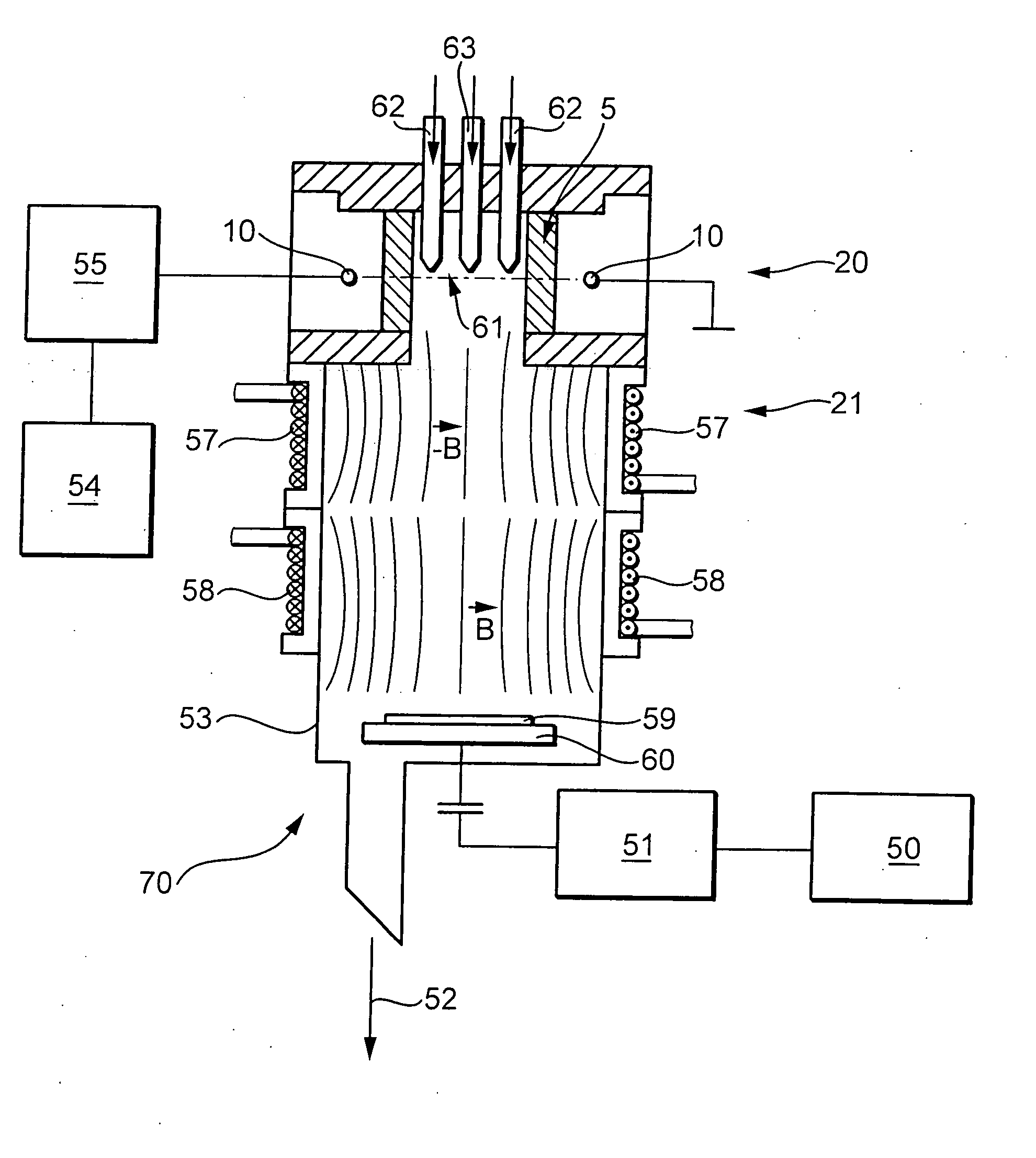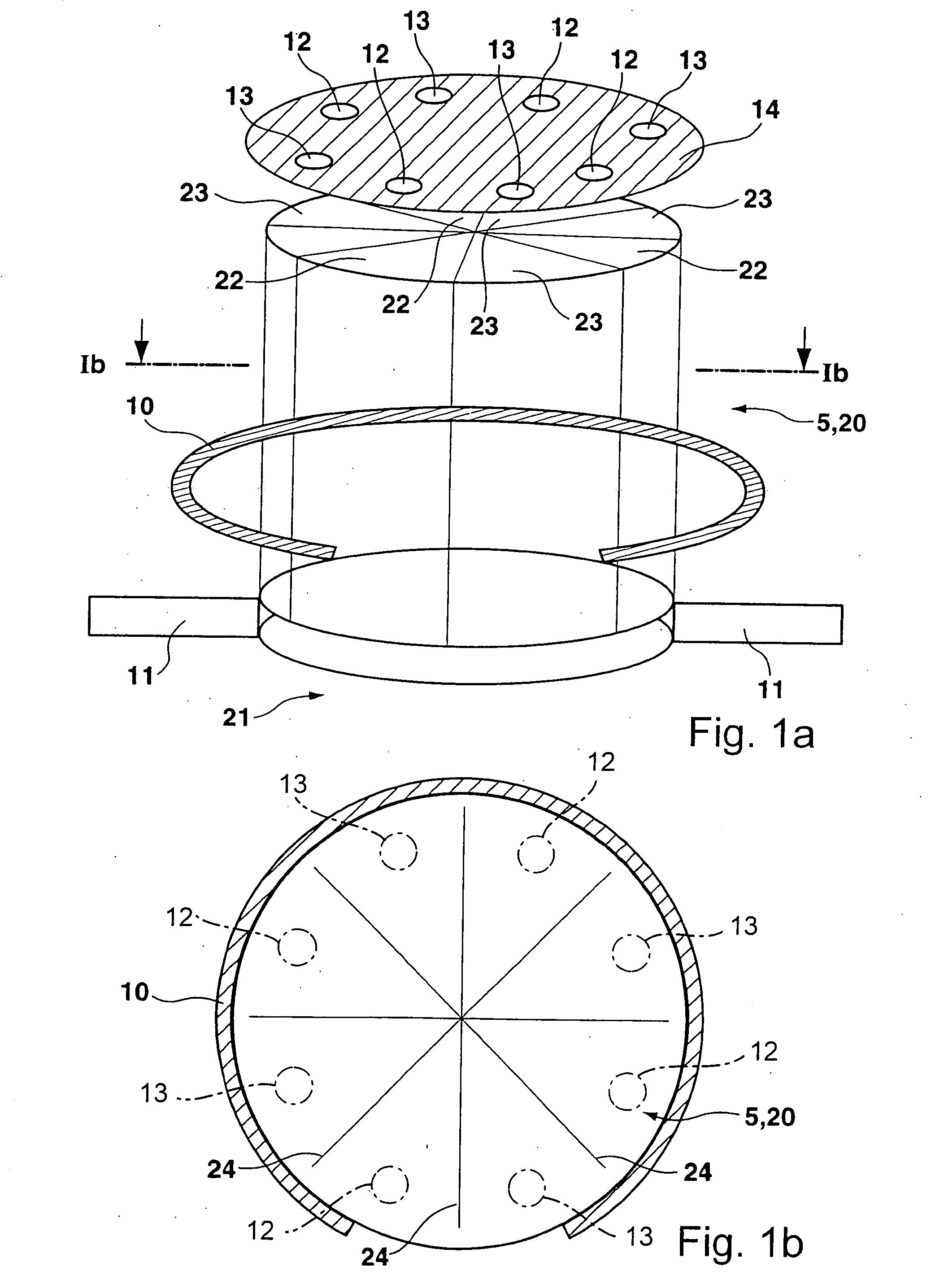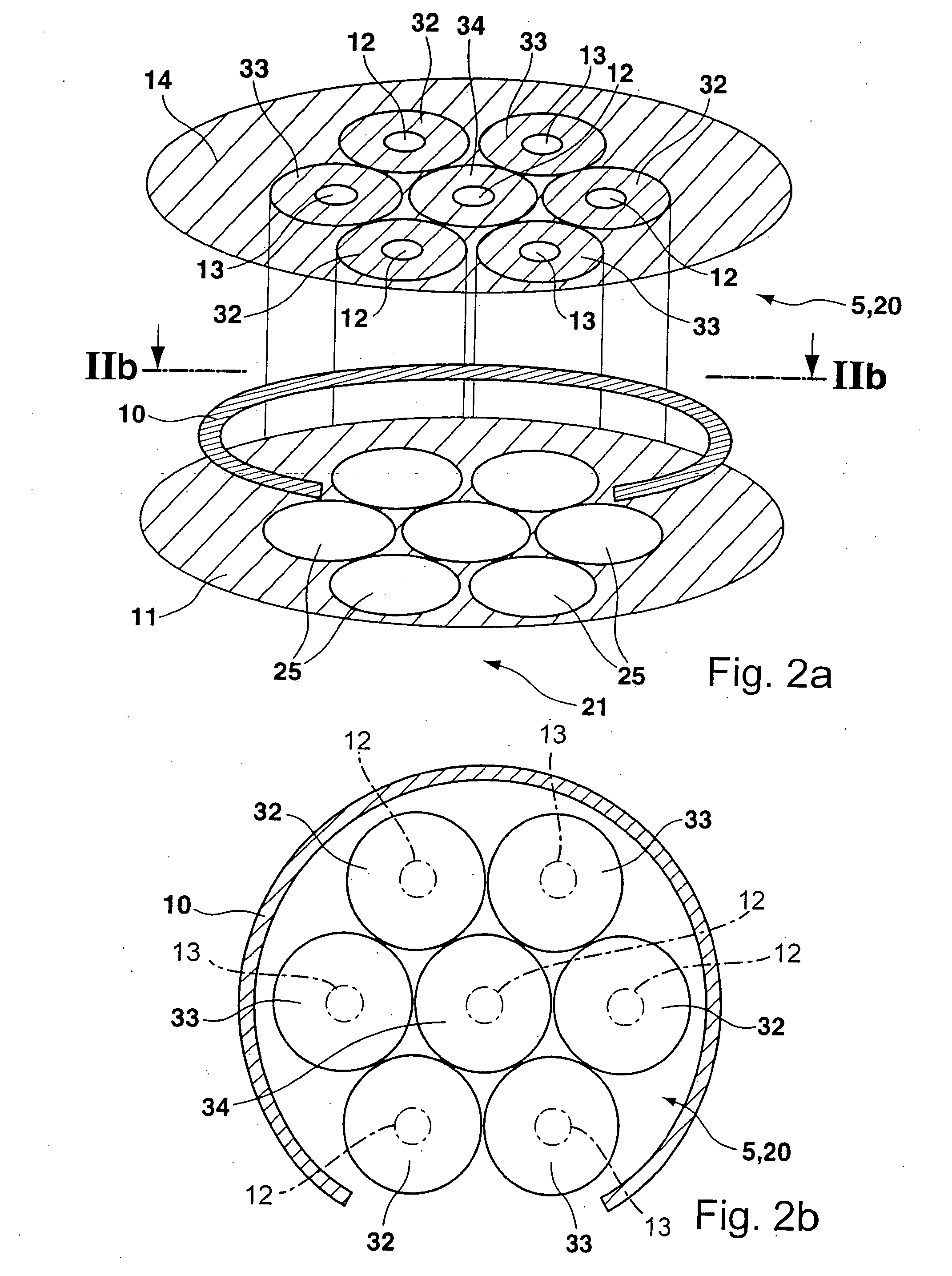Device and method for anisotropically plasma etching of a substrate, particularly a silicon body
a technology of anisotropic etching and substrate, which is applied in the direction of decorative surface effects, electrical appliances, decorative arts, etc., can solve the problems of reducing mask selectivity, increasing the risk of undesirable roughness in the etching base, and so on, so as to avoid process instabilities and smooth the sidewall of the trench
- Summary
- Abstract
- Description
- Claims
- Application Information
AI Technical Summary
Benefits of technology
Problems solved by technology
Method used
Image
Examples
Embodiment Construction
[0029] The exemplary device according to the present invention and the exemplary method according to the present invention, which may be implemented using the method, have the principal aim, instead of providing a separation in time between generating an etching species (F) which etches silicon, for example, and a passivation species (CnF2n) forming Teflon-like films, as from German patent document no. 41 42 045, to provide physical separation between the locations where the two species in the plasma etching system are generated in order to be able to generate them at the same time and as far as possible without damaging interactions between them. However, it should be stressed that time separation as well as physical separation may be achieved; i.e., the exemplary embodiment and / or exemplary method according to the present invention may also be combined with the procedure according to German patent document no. 42 41 045 where required. However, this is not typically necessary.
[00...
PUM
| Property | Measurement | Unit |
|---|---|---|
| frequency | aaaaa | aaaaa |
| pressure | aaaaa | aaaaa |
| temperature | aaaaa | aaaaa |
Abstract
Description
Claims
Application Information
 Login to View More
Login to View More - R&D
- Intellectual Property
- Life Sciences
- Materials
- Tech Scout
- Unparalleled Data Quality
- Higher Quality Content
- 60% Fewer Hallucinations
Browse by: Latest US Patents, China's latest patents, Technical Efficacy Thesaurus, Application Domain, Technology Topic, Popular Technical Reports.
© 2025 PatSnap. All rights reserved.Legal|Privacy policy|Modern Slavery Act Transparency Statement|Sitemap|About US| Contact US: help@patsnap.com



